Which Beef Breeds Were Developed in the United States
With more than seventy recognized cattle breeds in the United States, it tin can be hard to identify each one. However, only a small number of cattle breeds (less than 20) make up the majority of the genetics utilized in the U.Southward. for commercial beef production.
Hither are the 5 nearly pop U.S. beefiness cattle breeds co-ordinate to the U.S. Cattlemen's Beefiness Board, plus five more that are very well known in the U.s.a..
Blackness Angus
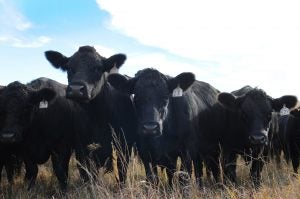
Black Angus is the most common brood of beef cattle in the U.S., with more than 330,000 animals registered. 1 reason the breed is then pop is their carcass characteristics, which are marketed as yielding well-marbled, flavorful beef. Also, Angus cattle require trivial maintenance during calving season, are good mothers, and are very feed efficient. The Black Angus cattle brood came to the U.S. in the 19th century and gained its footing in Kansas.
Charolais
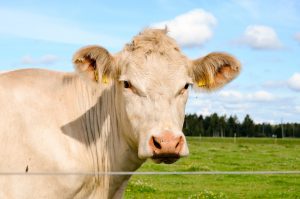
It has been said that no other breed has impacted the North American beef manufacture and so significantly equally the introduction of Charolais. The Charolais came into widespread utilize in the United States cattle manufacture at a time when producers were seeking larger framed, heavier cattle than the traditional British cattle breeds. Charolais are white or flossy white in color and the pilus glaze is unremarkably curt in summer, only thickens and lengthens in cold weather.
Hereford
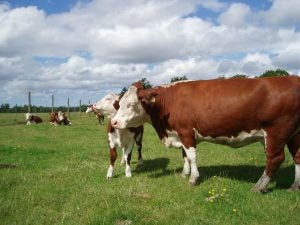
Originating in England, Herefords became very pop in the U.Due south. for their early maturity and fattening power. Dark red to red xanthous in color with a white face, Herefords are known for their longevity, and for being docile, piece of cake calvers, good milkers, and skilful mothers.
Simmental
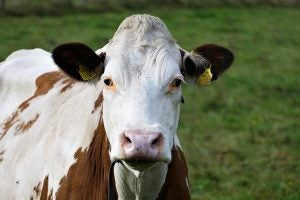
The Simmental is among the oldest and most widely distributed of all breeds of cattle in the world. The reddish and white animals were beginning introduced to the U.Due south. in the late 19th century and have been positively influencing the beef customs ever since. They accept a large trunk frame, merely they require fiddling assist during calving season and have excellent weight gaining potential.
Red Angus
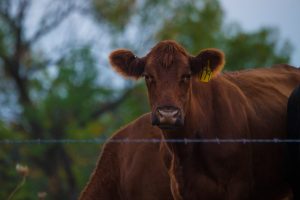
Not equally pop as Black Angus, Cherry Angus practice offering the aforementioned valuable carcass characteristics that result in increased marbling and flavor. Red Angus are also a docile cattle breed and possess good mothering traits. They are more tolerant to hot temperatures than black Angus.
Texas Longhorn
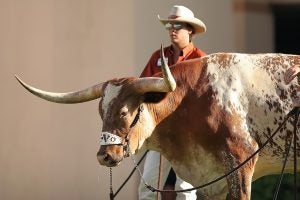
The Texas Longhorn is the end production of "survival of the fittest". Brought by Christopher Columbus and the Spanish colonists, the cattle breed is known for its characteristic horns, which tin can extend to over i.eight m tip to tip for bulls, and two.i thousand tip to tip for steers and exceptional cows. Texas Longhorns are known for their various coloring, and tin can be whatever color or mix of colors, just dark blood-red and white are the most dominant.
Gelbvieh
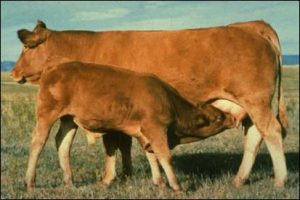
A European brood introduced to the United States through bogus insemination, the Gelbvieh breed is cherry in color, with strong skin pigmentation, and horned. Polled cattle take developed in the U.s.a. from the utilize of naturally hornless foundation females. Fans of the breed claim the breed has superior fertility, calving ease, mothering ability, and growth rate of the calves.
Holstein
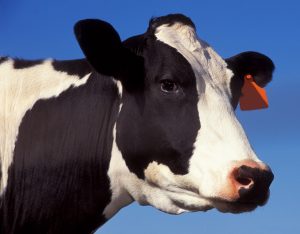
While the black and white cattle are the most popular breed for dairy, Holsteins not used for breeding stock or milk product are raised for their value as beef cattle. Beef from finished Holstein finished steers has many desirable characteristics and provides a consequent product. Genetic similarity contributes profoundly to the consistency of the quality of beef provided by Holsteins.
Limousin
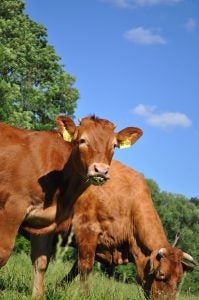
The gilt-crimson breed are native to the southward central part of France in the regions of Limousin and Marche. From the initial U.S. concentrations in Oklahoma, Texas, and South Dakota, the Limousin breed has expanded across North America. Today, there are more a one thousand thousand registered head here. The tremendous carcass traits of the breed take attracted the full attention of the entire beef manufacture.
Highlands
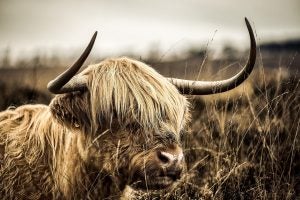
With long horns and a double coat, Highlands require little in the style of shelter, feed supplements, or expensive grains to achieve and maintain proficient condition and fitness. Cold conditions and snowfall have petty event on them. They have been raised as far north as Alaska and the Scandinavian countries. They also adapt well to the more southerly climates with successful herds as far due south as Texas and Georgia. Long lashes and forelocks shield their eyes from flying insects, and as a result, pinkeye and cancer eye are uncommon. Highland beefiness is meat that is lean, well marbled and flavorful, with little outside waste product fat.
Sponsored Content on AGDaily
Source: https://www.agdaily.com/livestock/top-10-cattle-breeds-united-states/
0 Response to "Which Beef Breeds Were Developed in the United States"
Postar um comentário